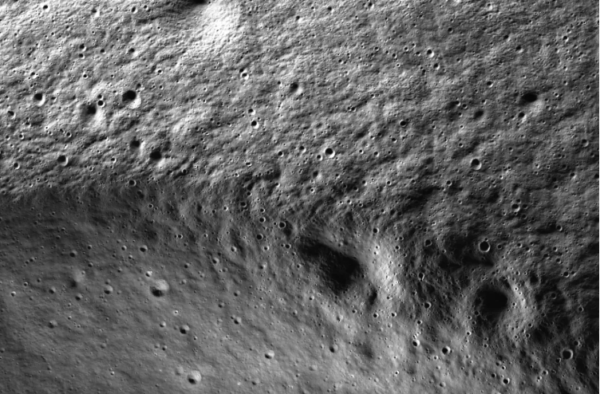This picture of a crater rim near the lunar south pole demonstrates how NASA’s most recent lunar camera is shedding fresh light on the moon’s shadowy areas.
The latest image, captured on February 28 by the NASA-funded ShadowCam, depicts a part of the 2.85-mile-wide (4.6-kilometer-wide) Marvin crater, which is located barely 16 miles (26 kilometers) from the moon’s south pole.

South Korean probe beams light into a shadowy lunar crater.
The ultrasensitive Shadowcam is designed to detect light reflected from surfaces. While sections illuminated by direct sunshine would look saturated to the instrument, Shadowcam’s sensitivity allows it to detect persistently darkened zones (PSRs) that are extremely weakly lit.
According to an update(opens in a new tab) issued by the ShadowCam team on March 13, the new image reveals illumination changes between craters inside and outside the rim of Marvin crater. The craters are lighted by dim light dispersed from neighboring mountains. This results in significant variations in the direction of light received by even close craters.
The crater Marvin was named after the pioneering planetary geologist Ursula Marvin. The interior of the crater is permanently under shade.
ShadowCam operates onboard the Danuri spacecraft of the Korea Aerospace Research Institute, which reached lunar orbit in December 2022. It is 200 times more sensitive than the cameras aboard NASA’s Lunar Reconnaissance Orbiter, which have been in operation since 2009.
ShadowCam has already released never-before-seen information on Shackleton crater during its commissioning process.
According to NASA, the high-resolution photographs obtained by ShadowCam might reveal information on the development of the moon, water locked as ice in shadowed places, and potentially aid in site selection future crewed Artemis missions.
In the meantime, Danuri has been utilizing its five other payloads, including returning photographs from its primary camera.

